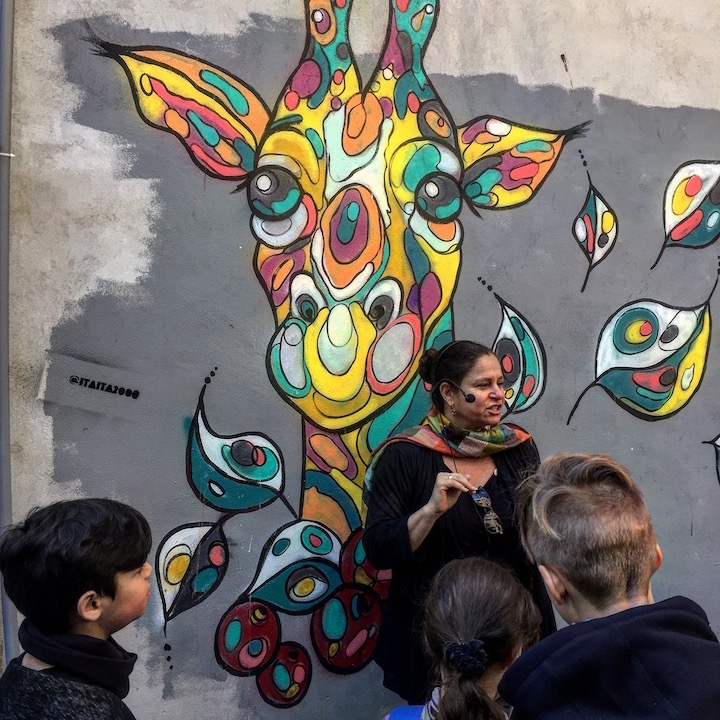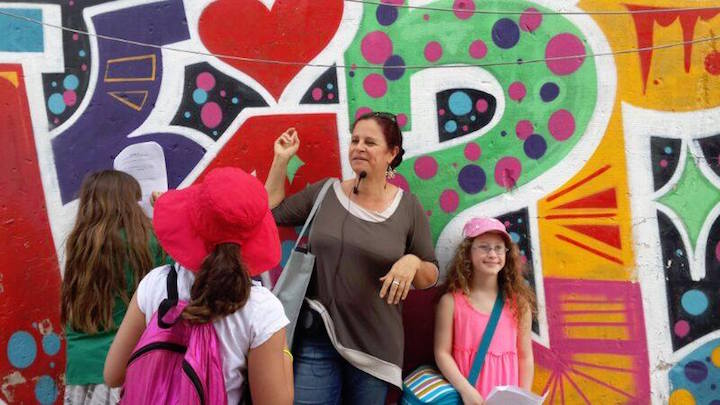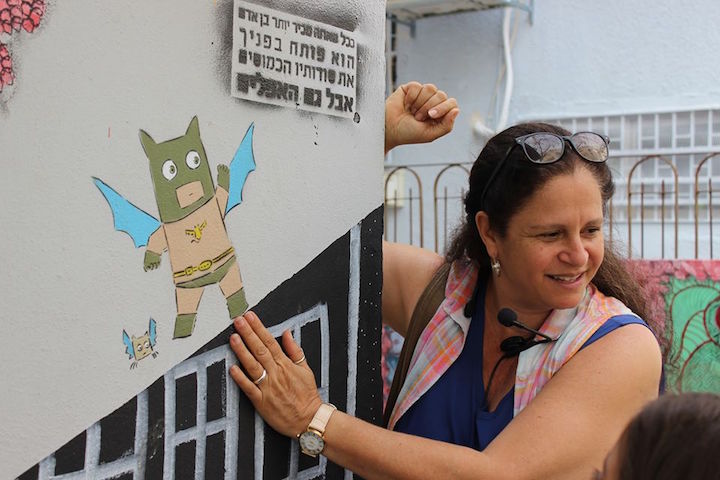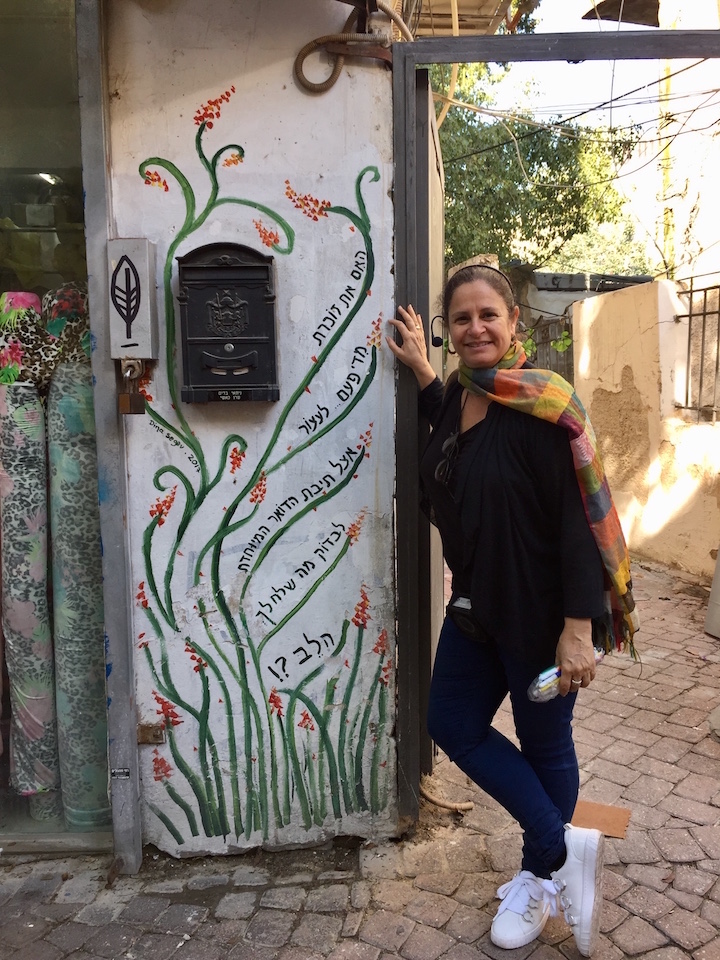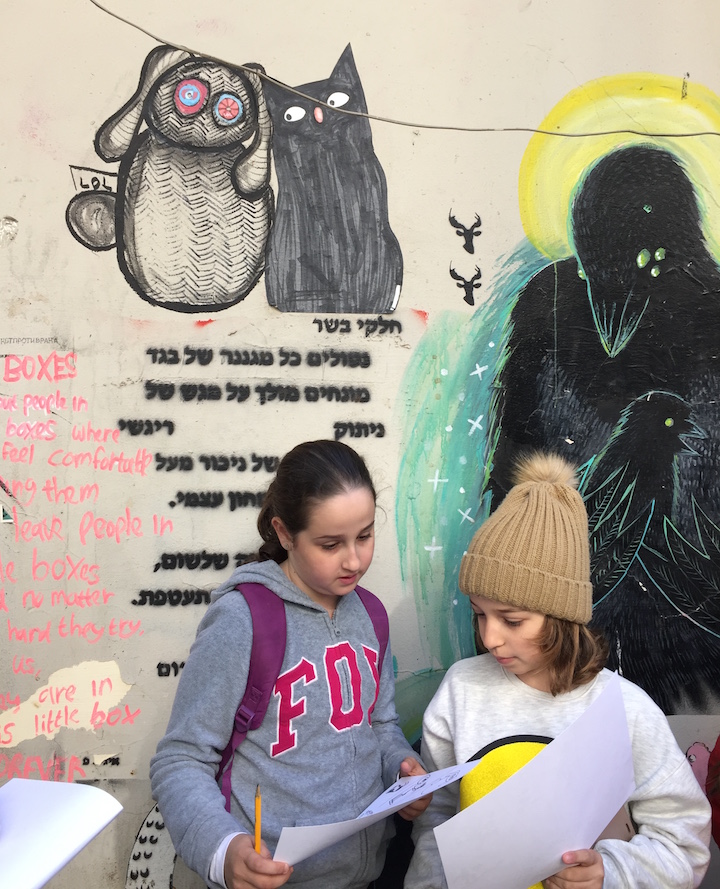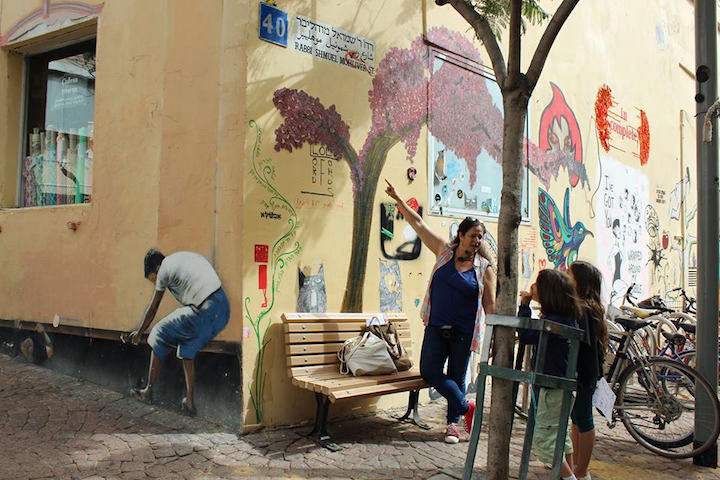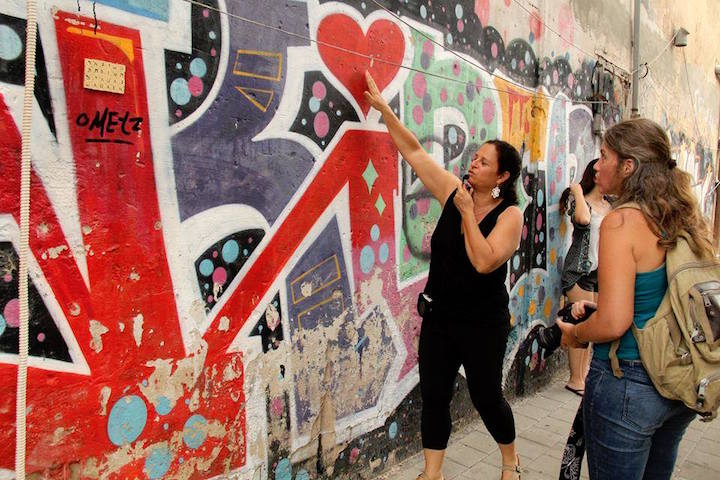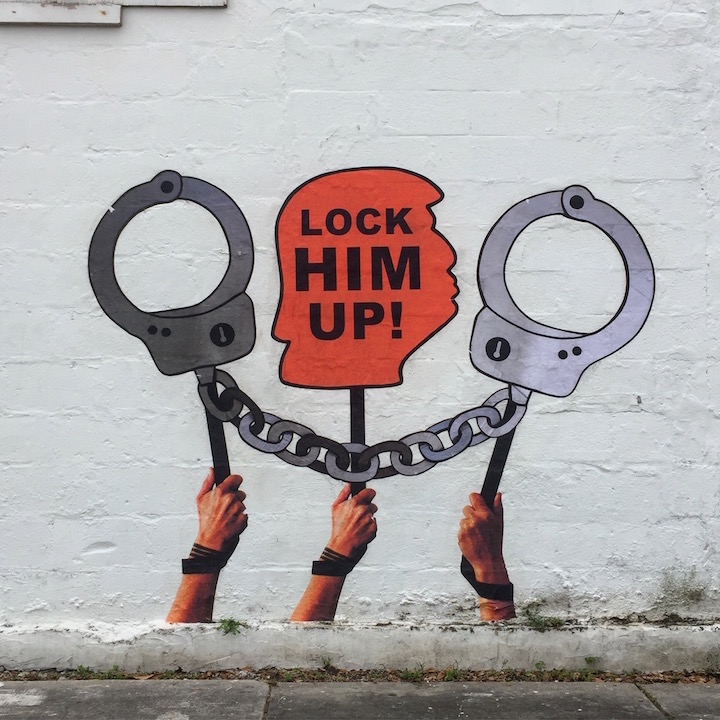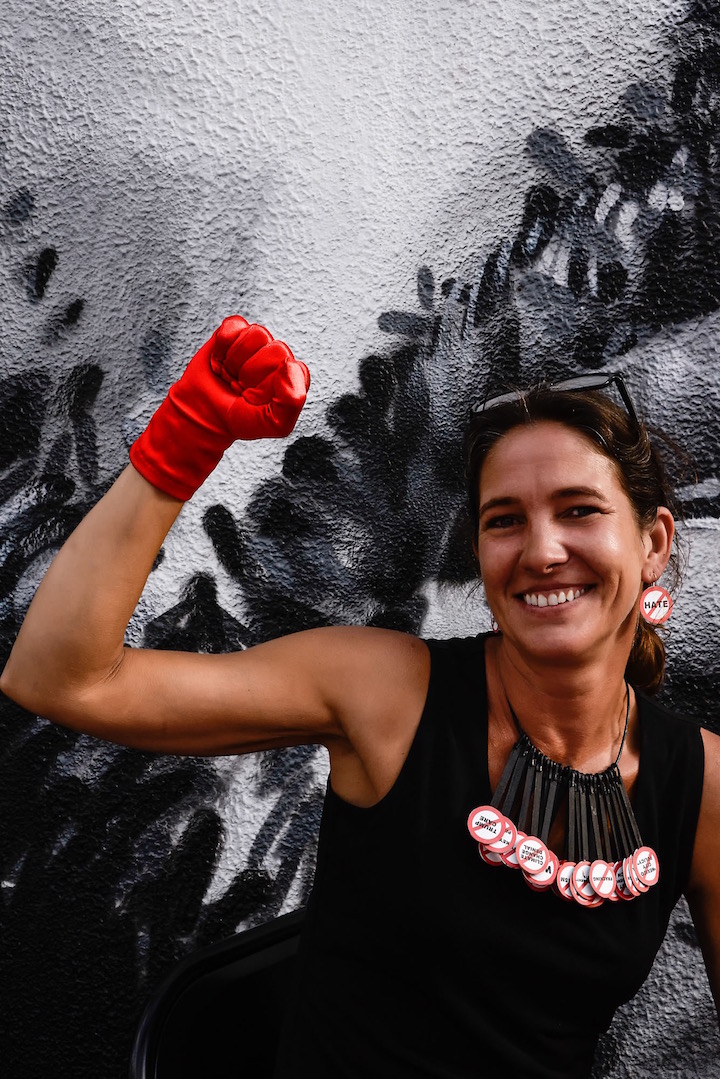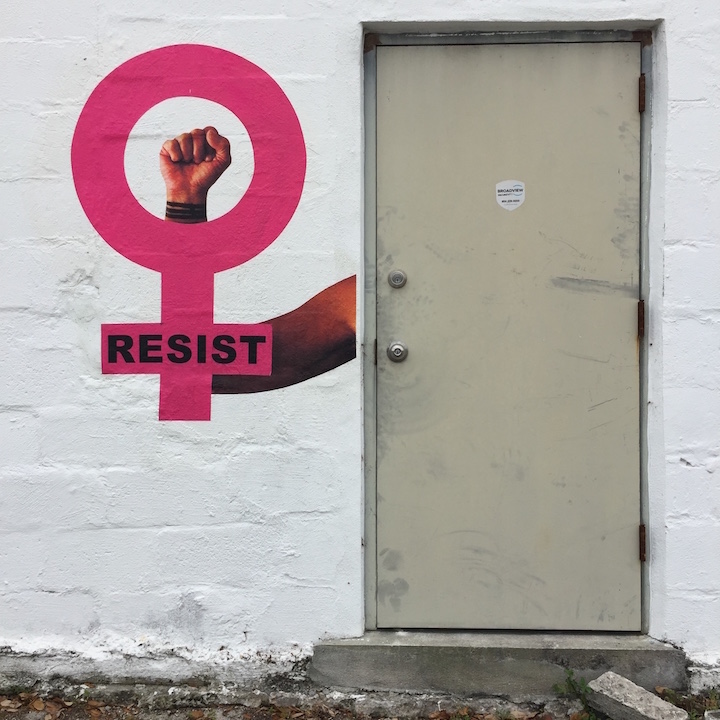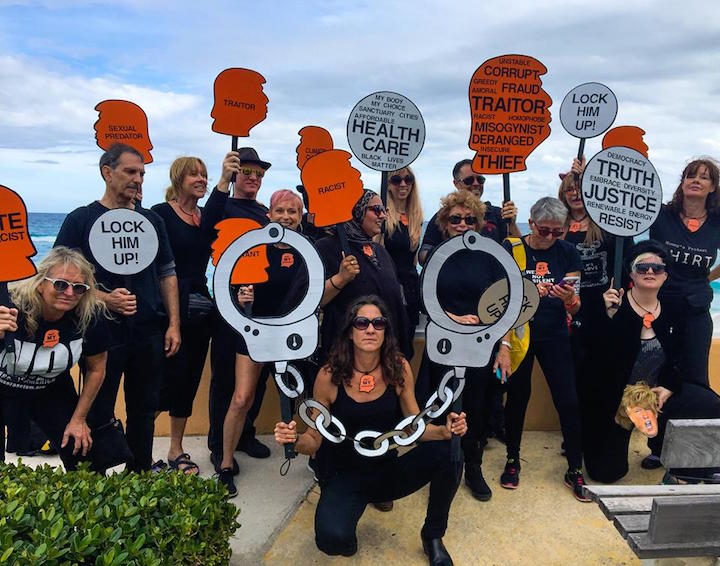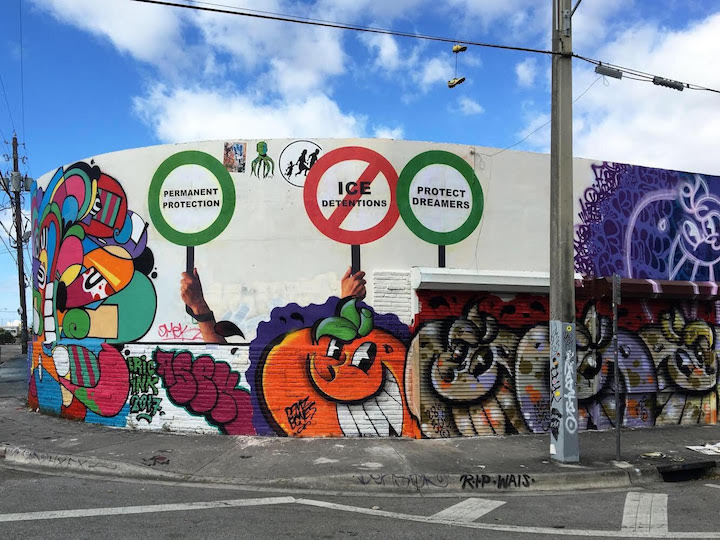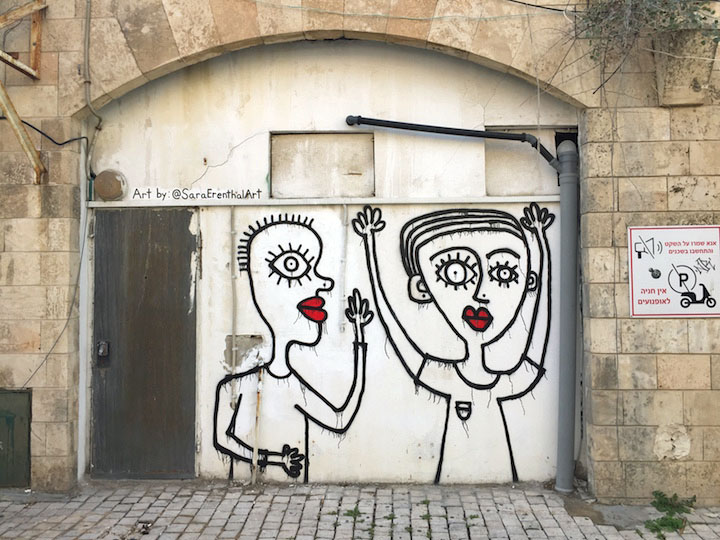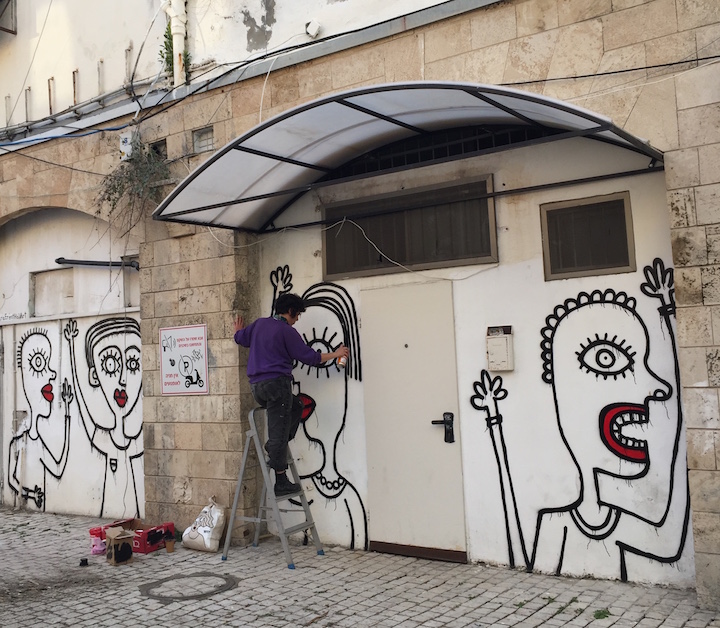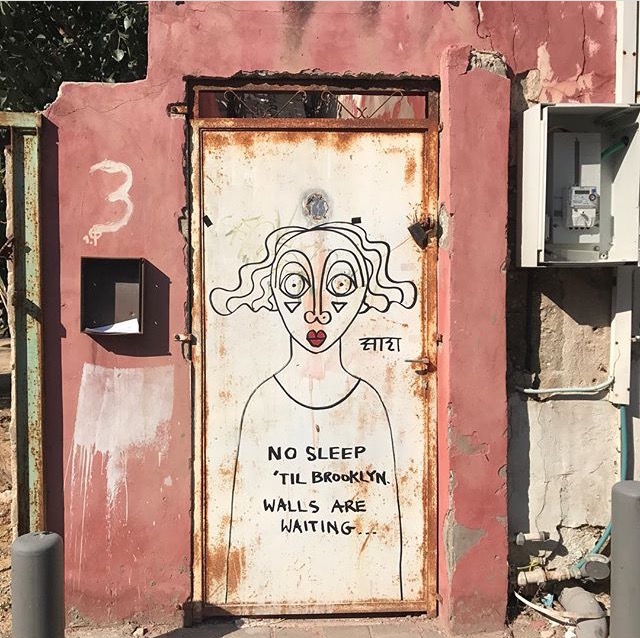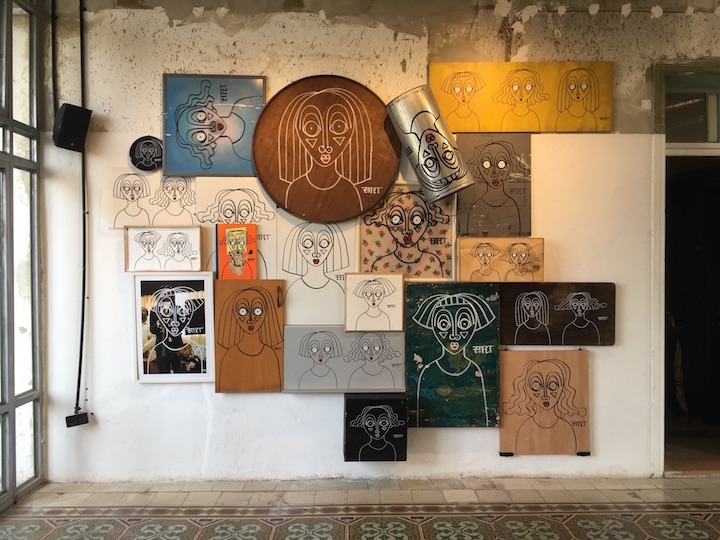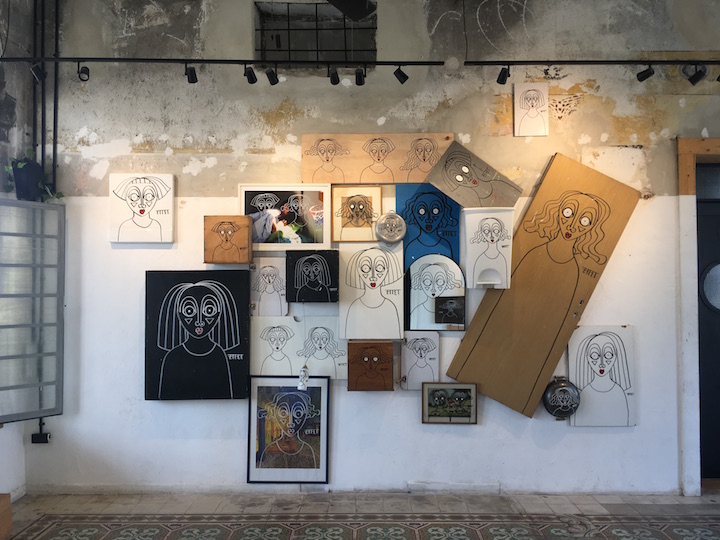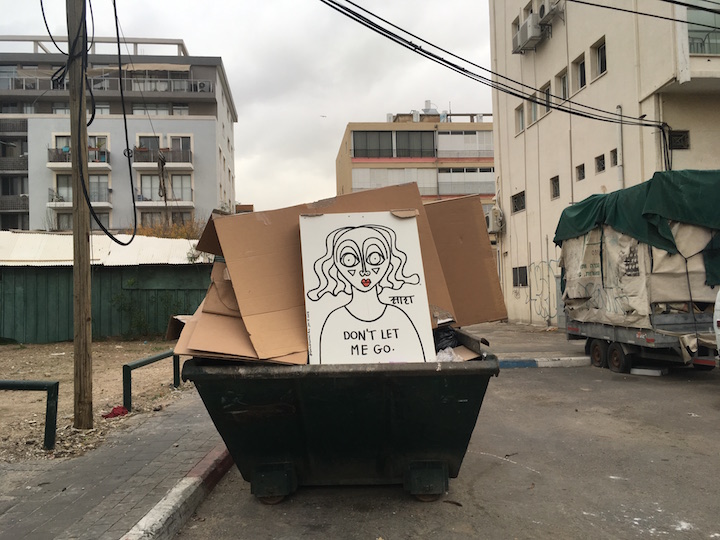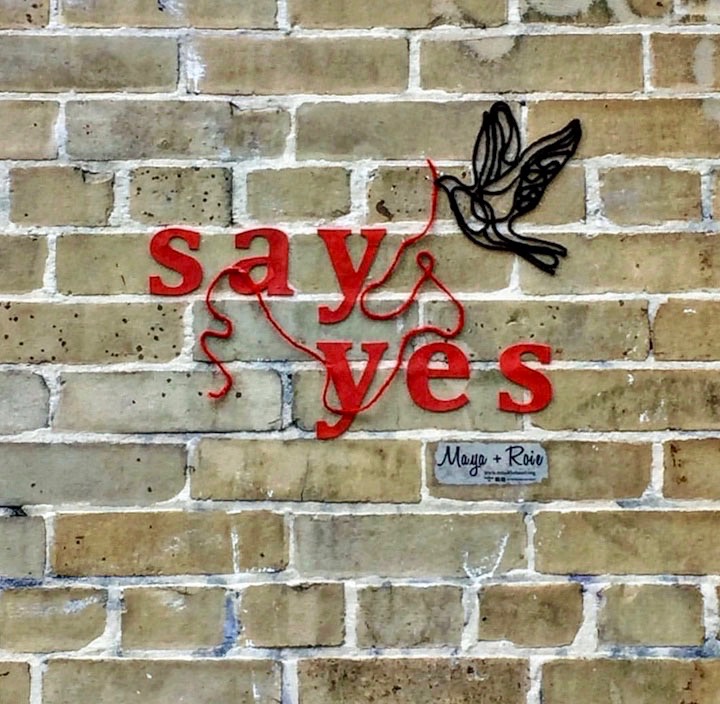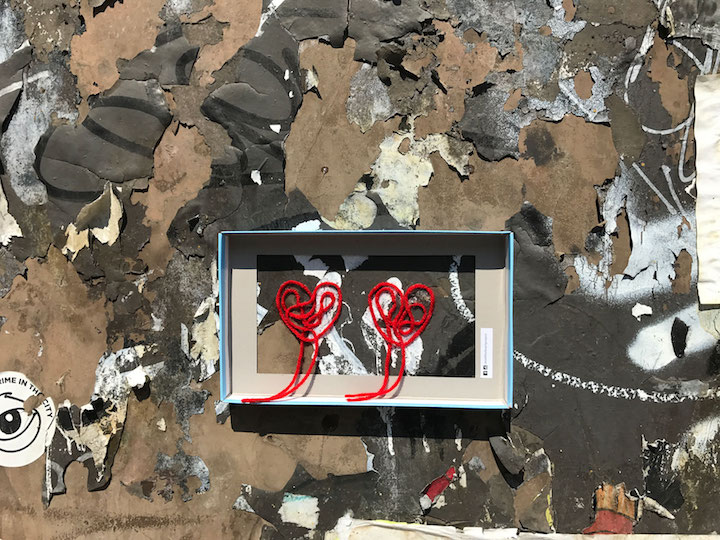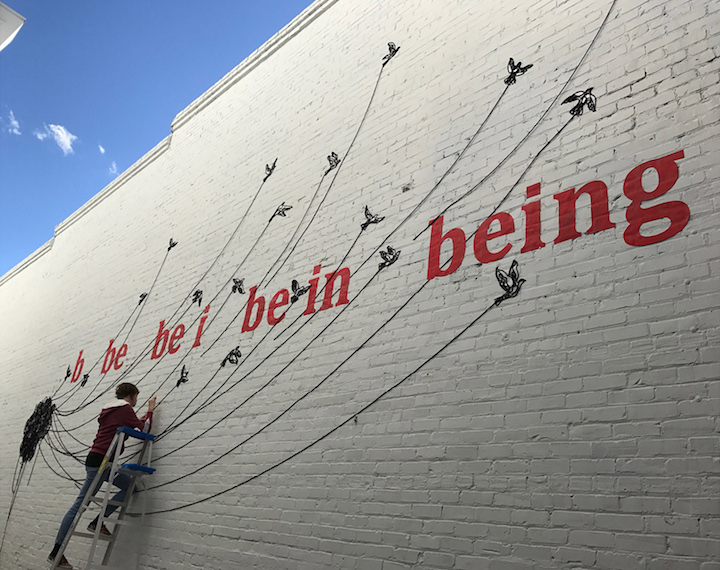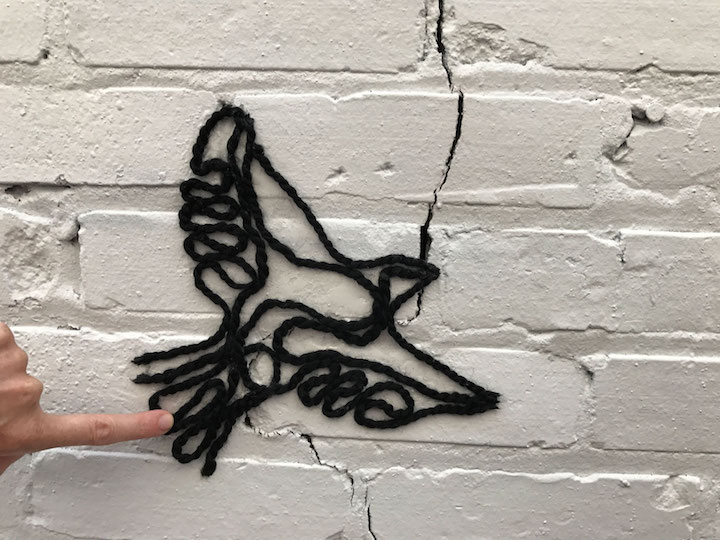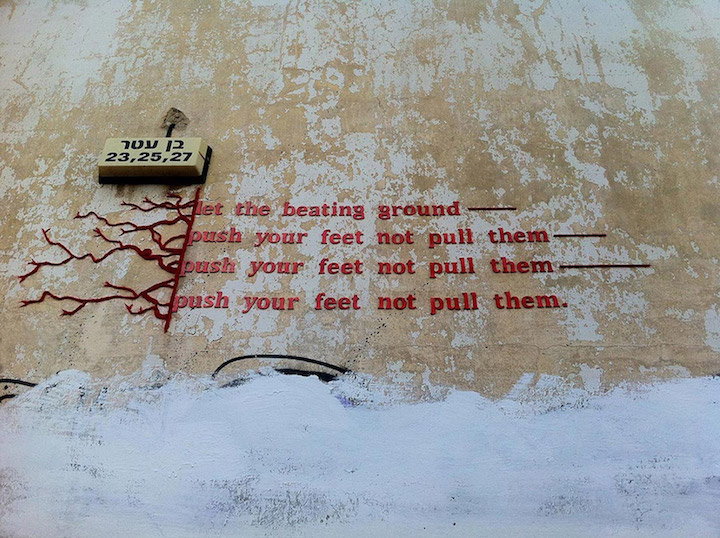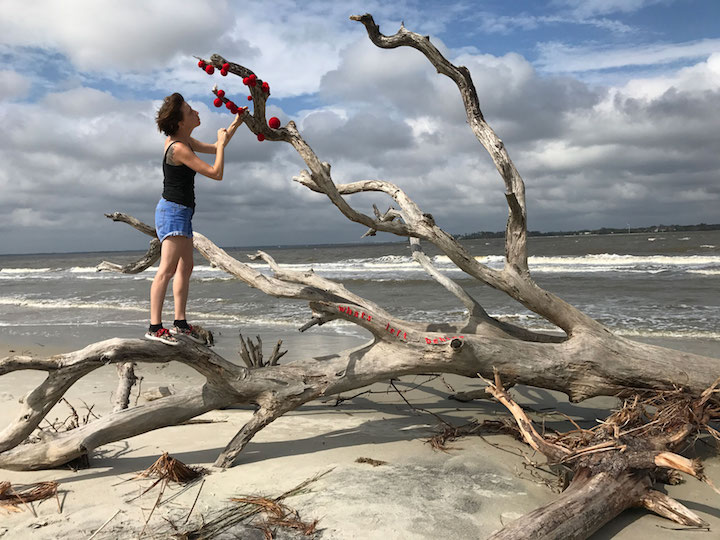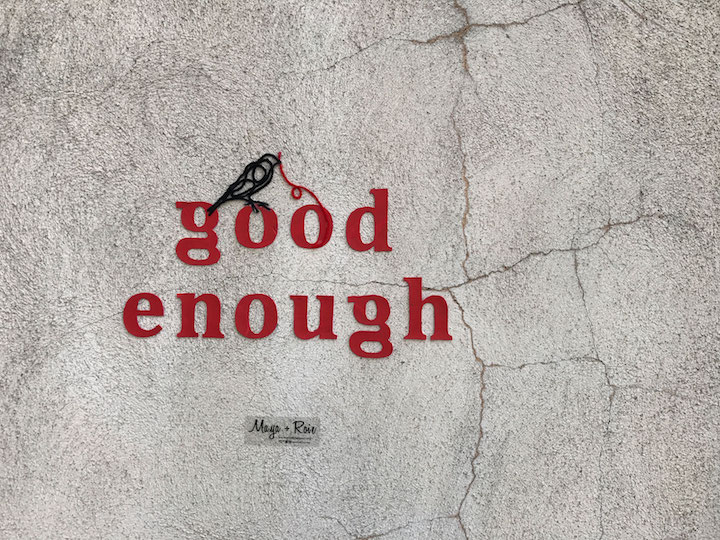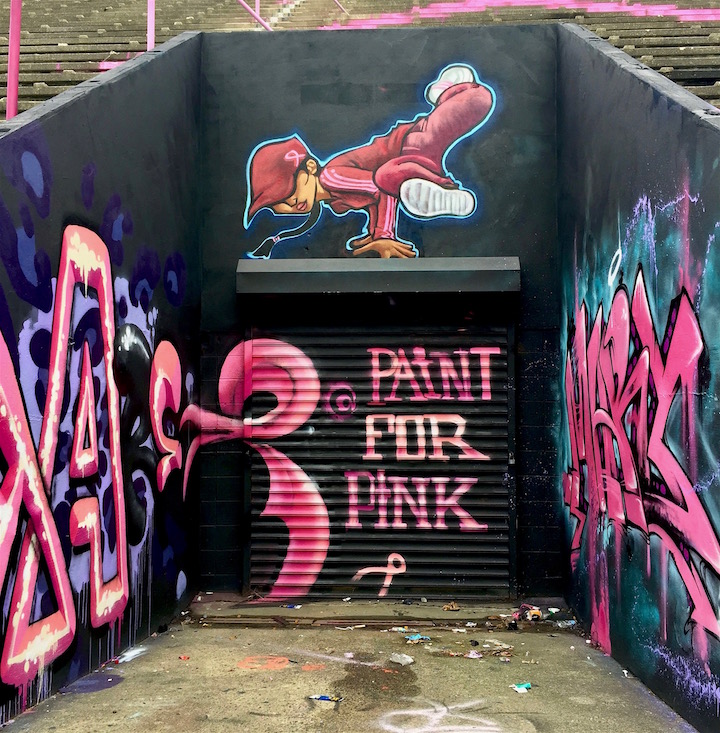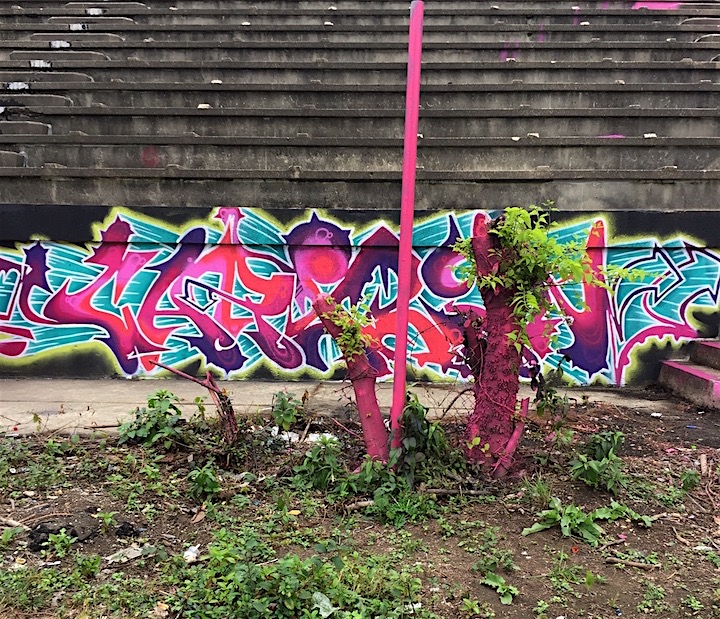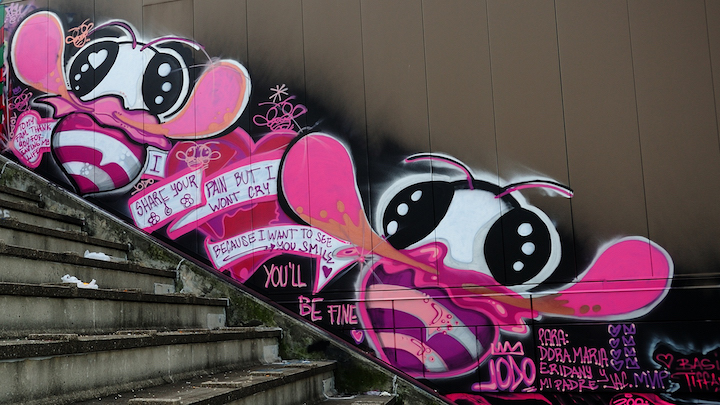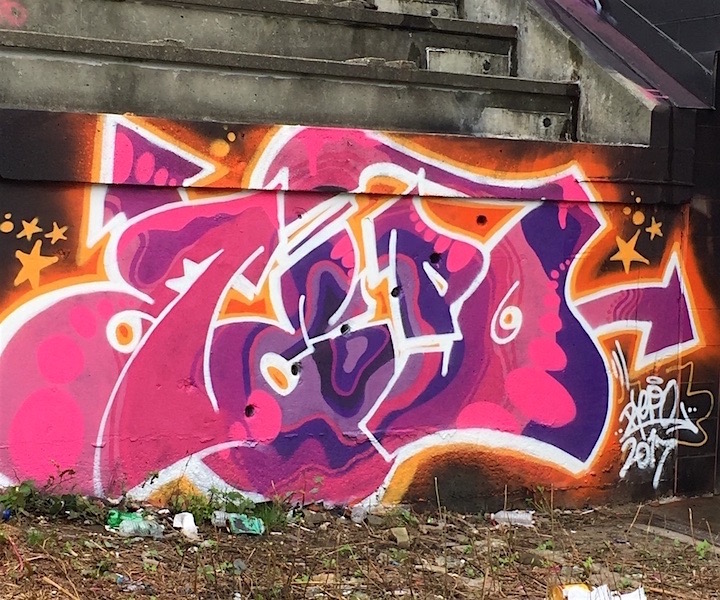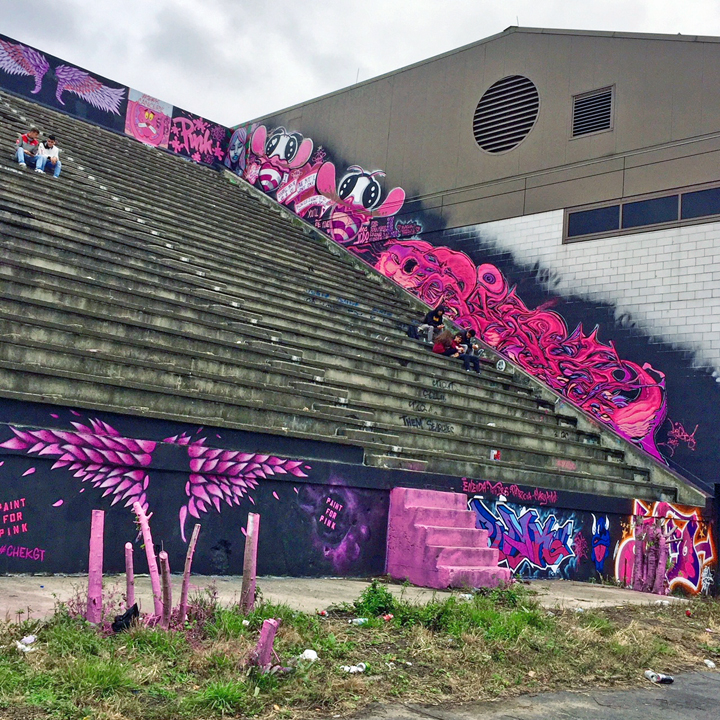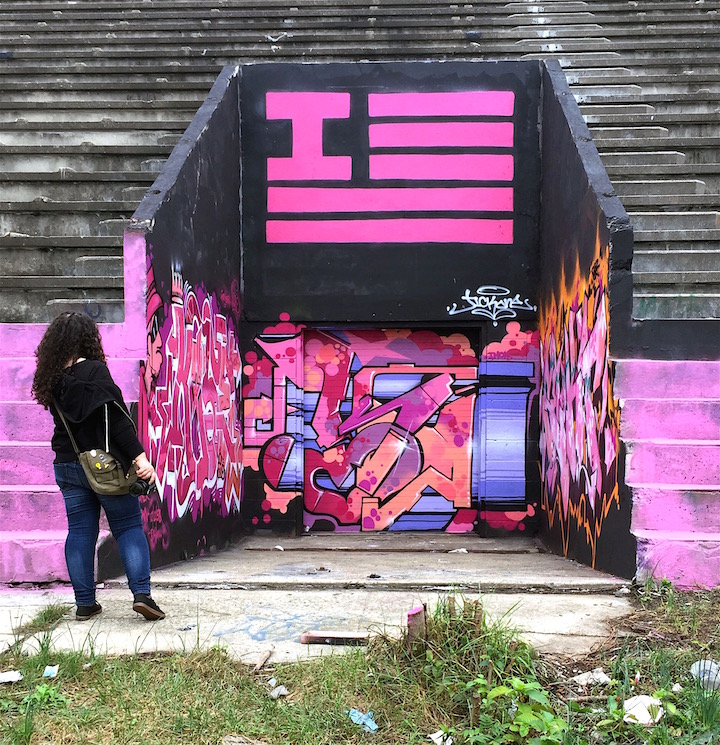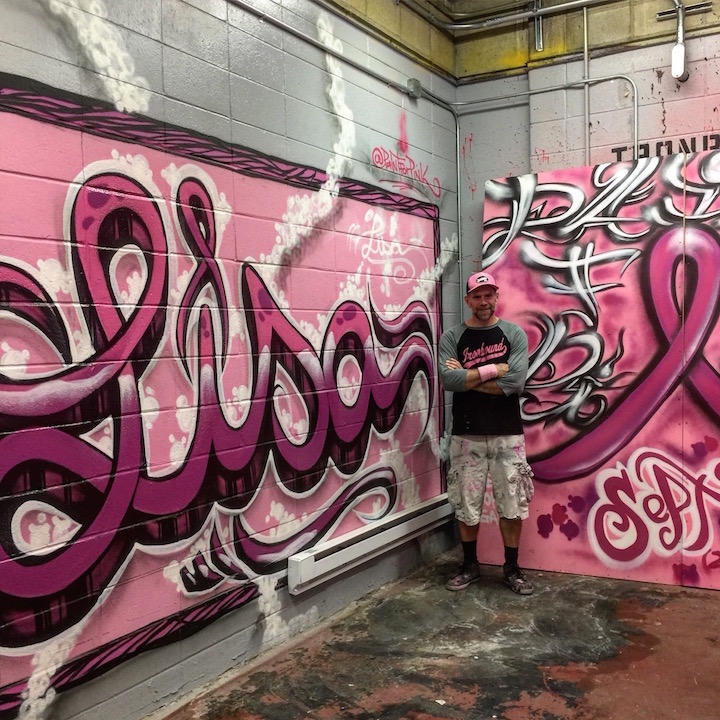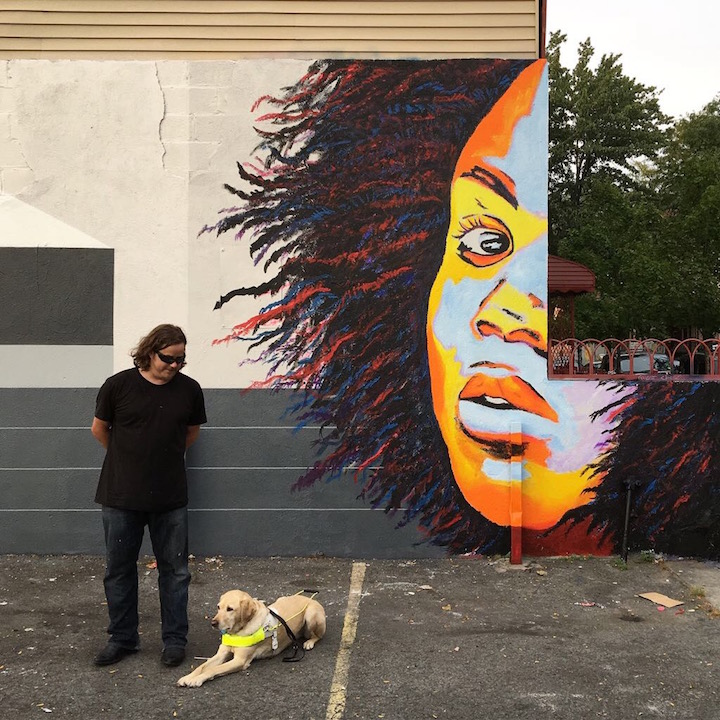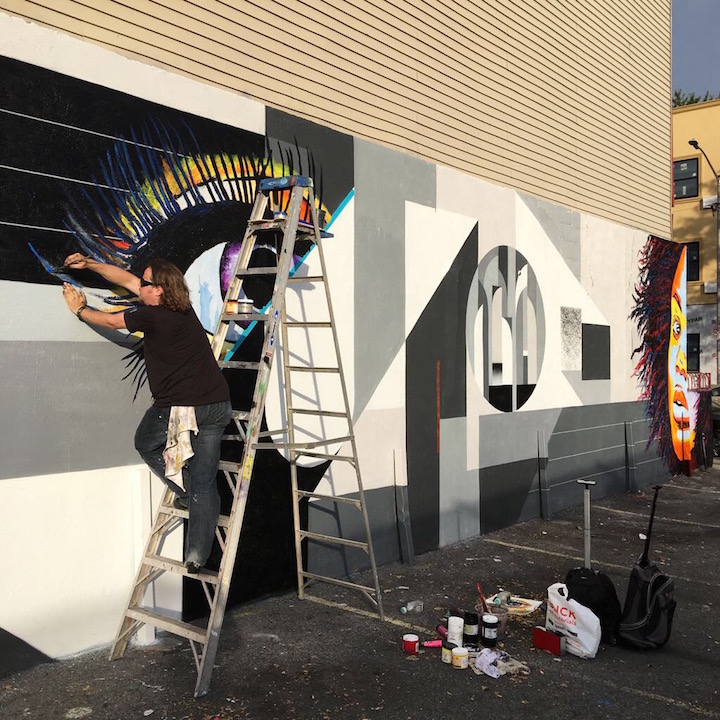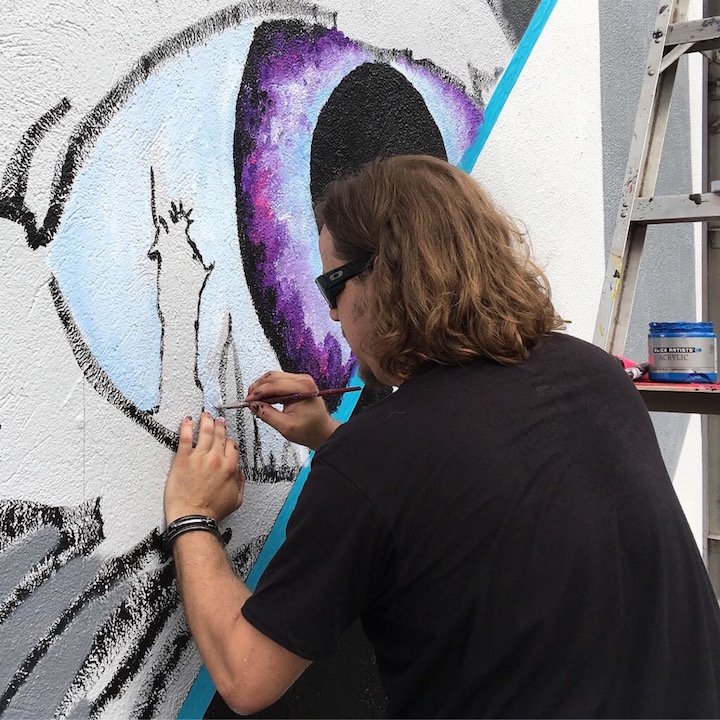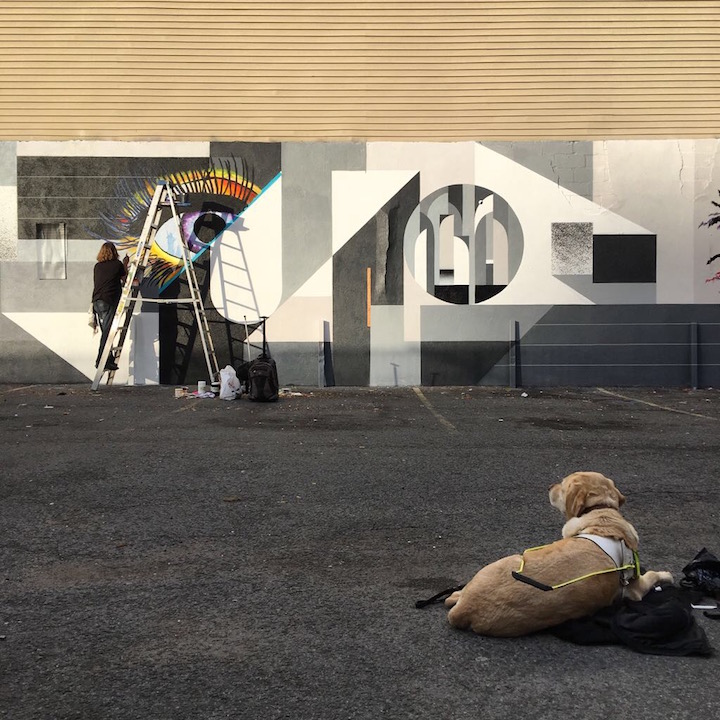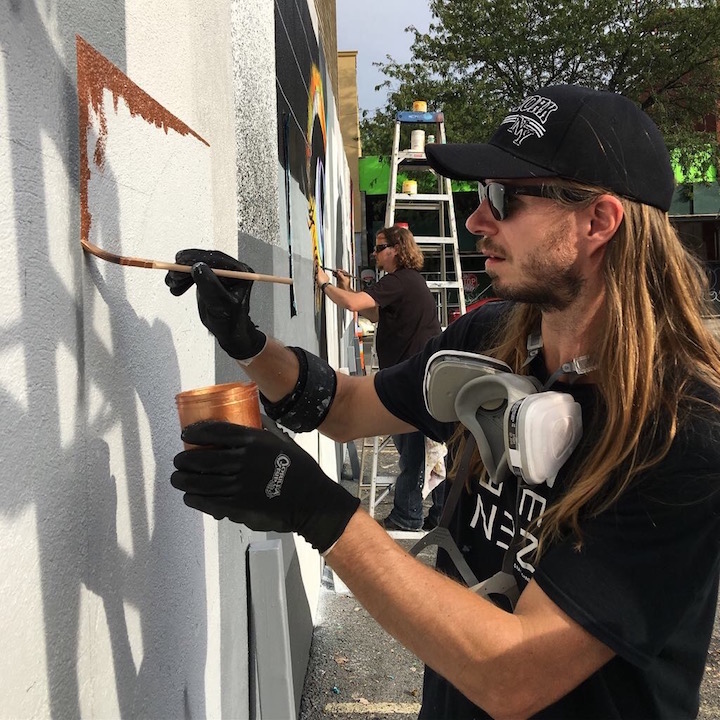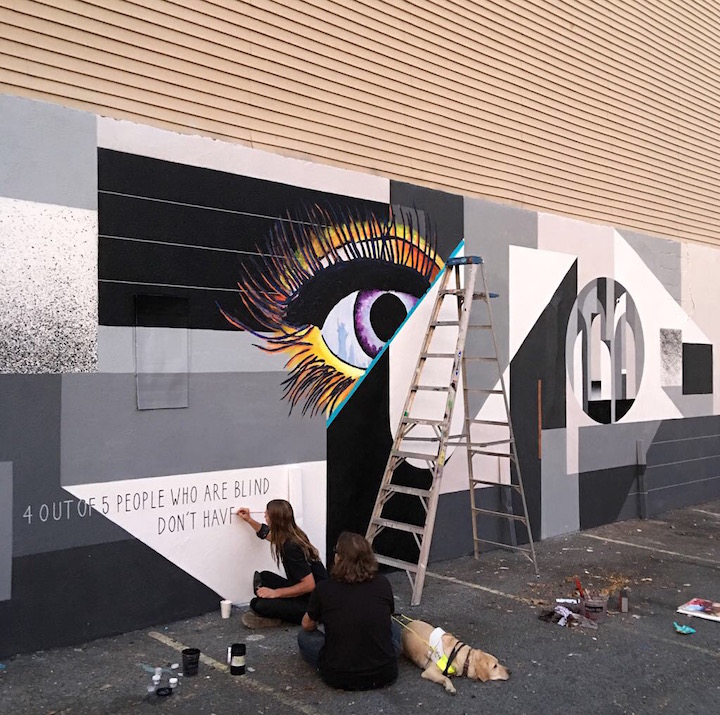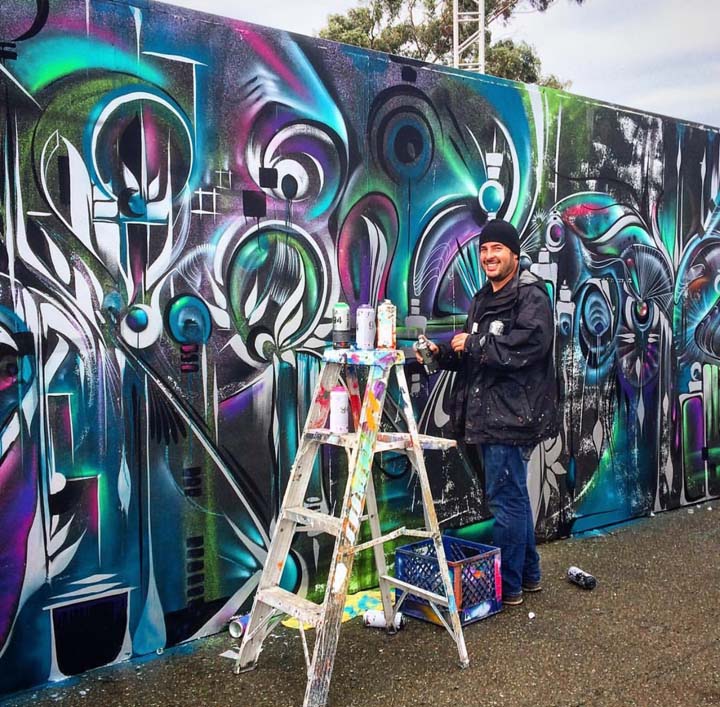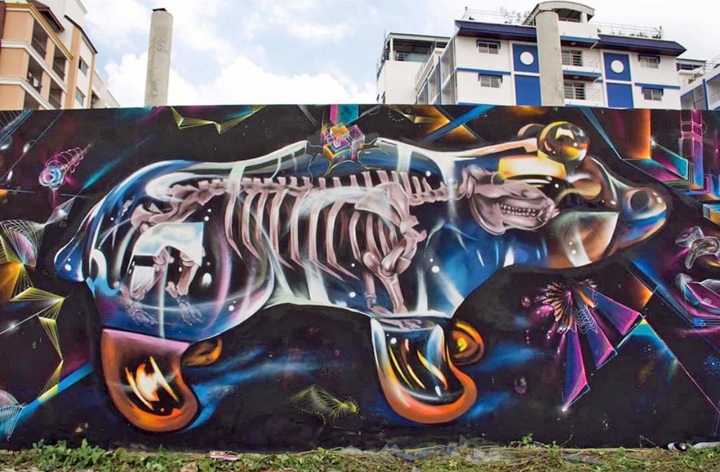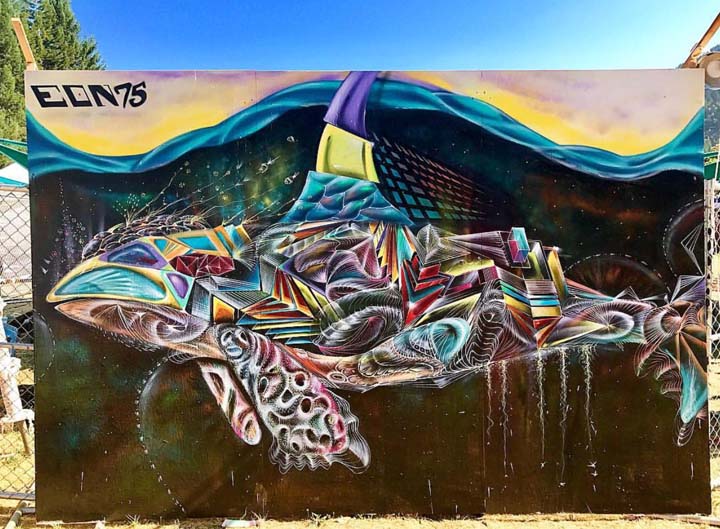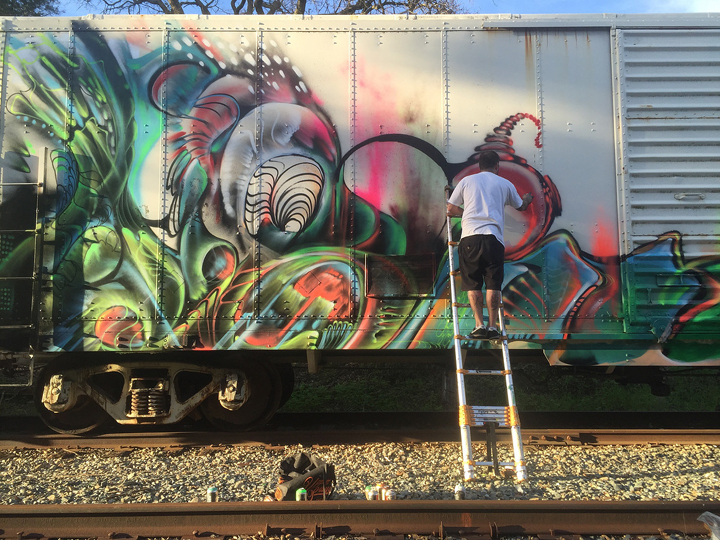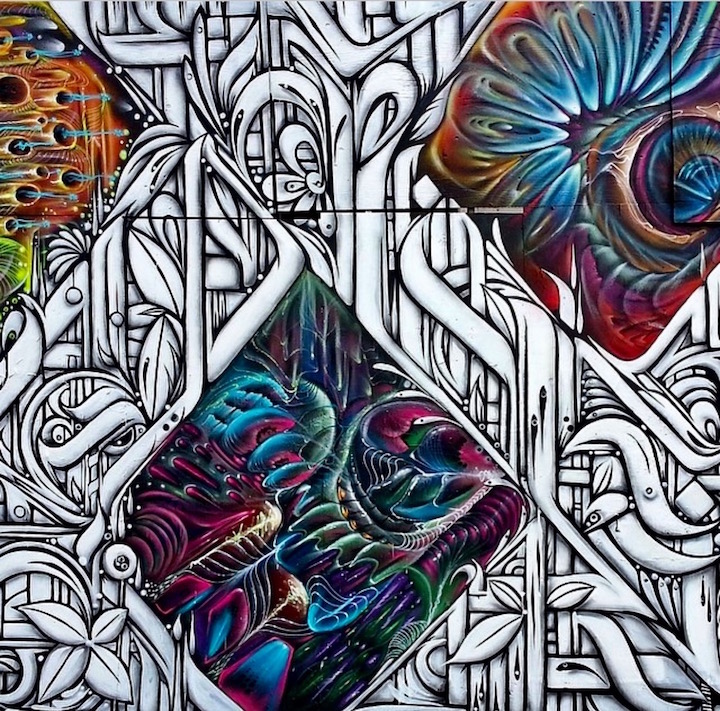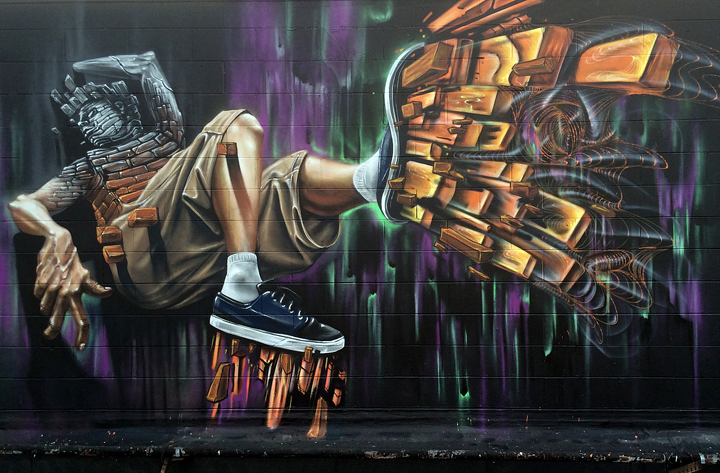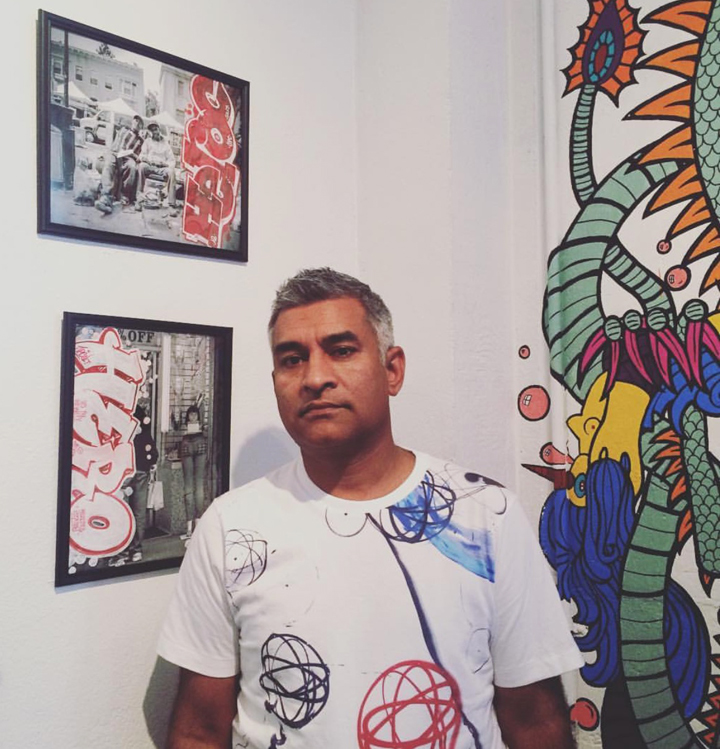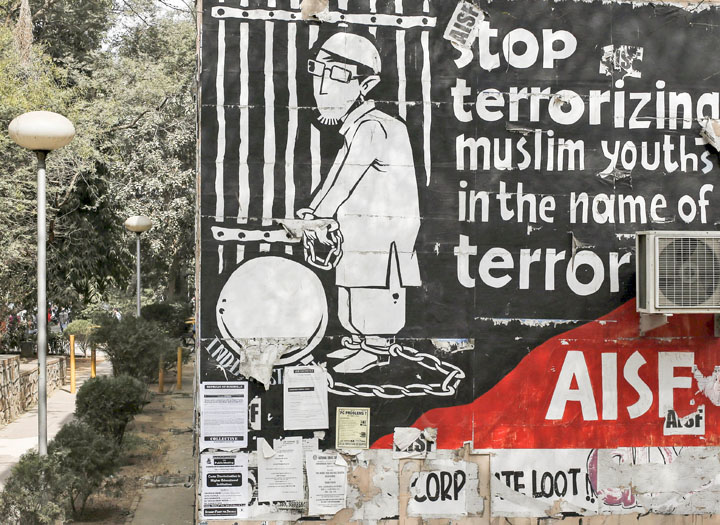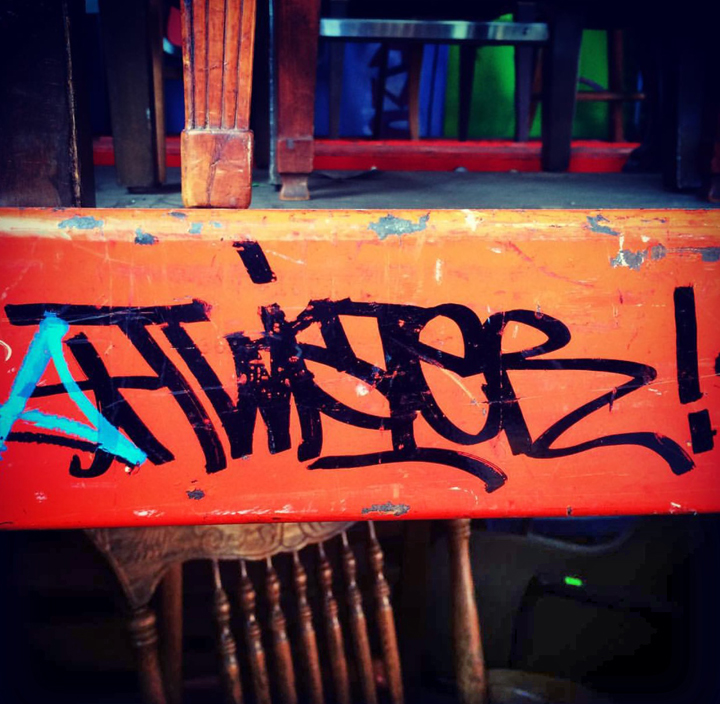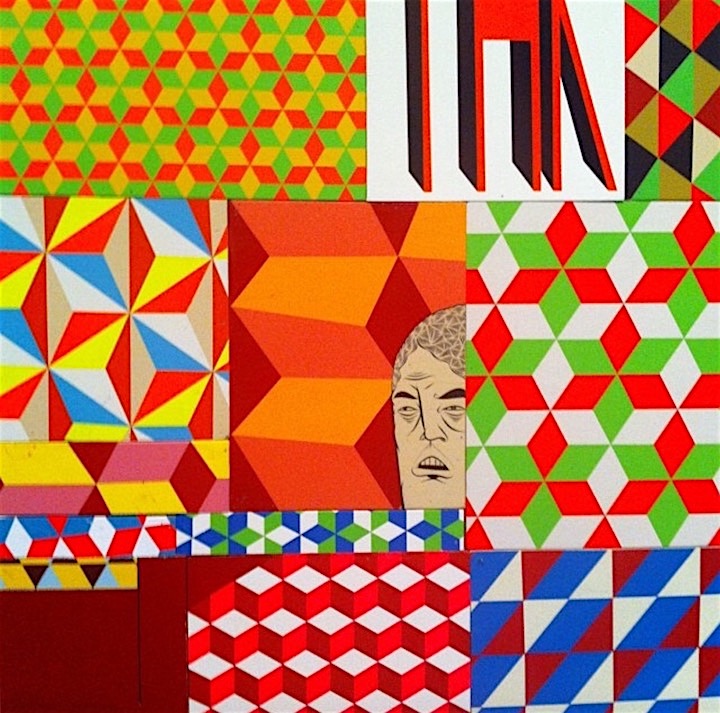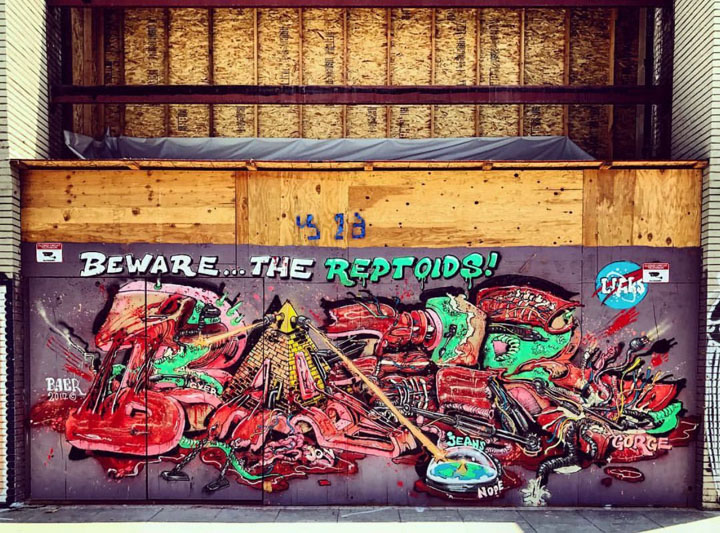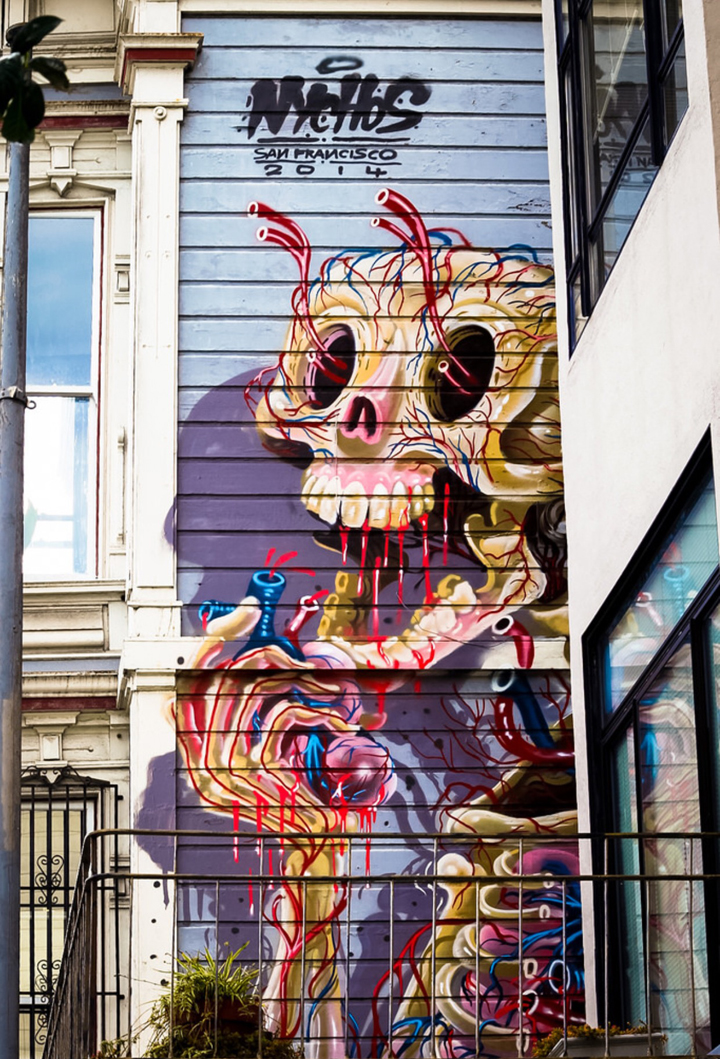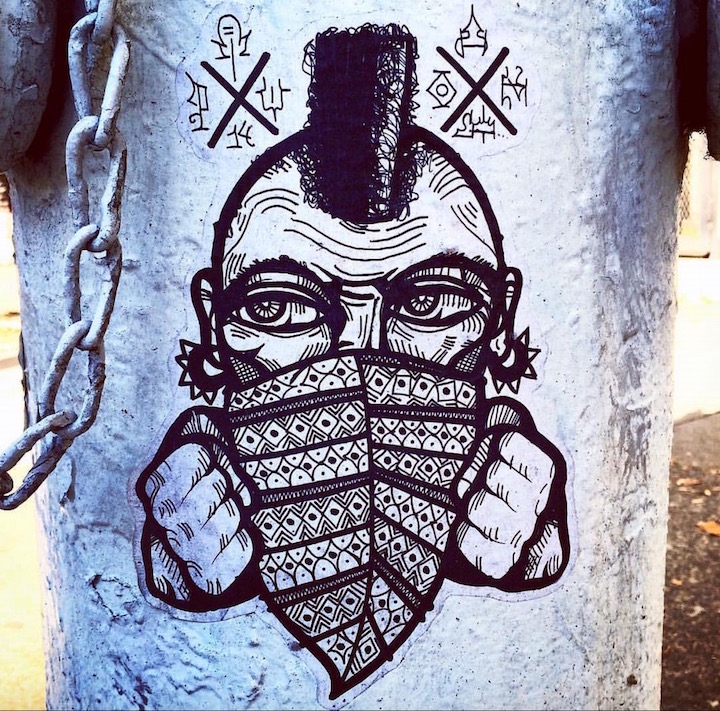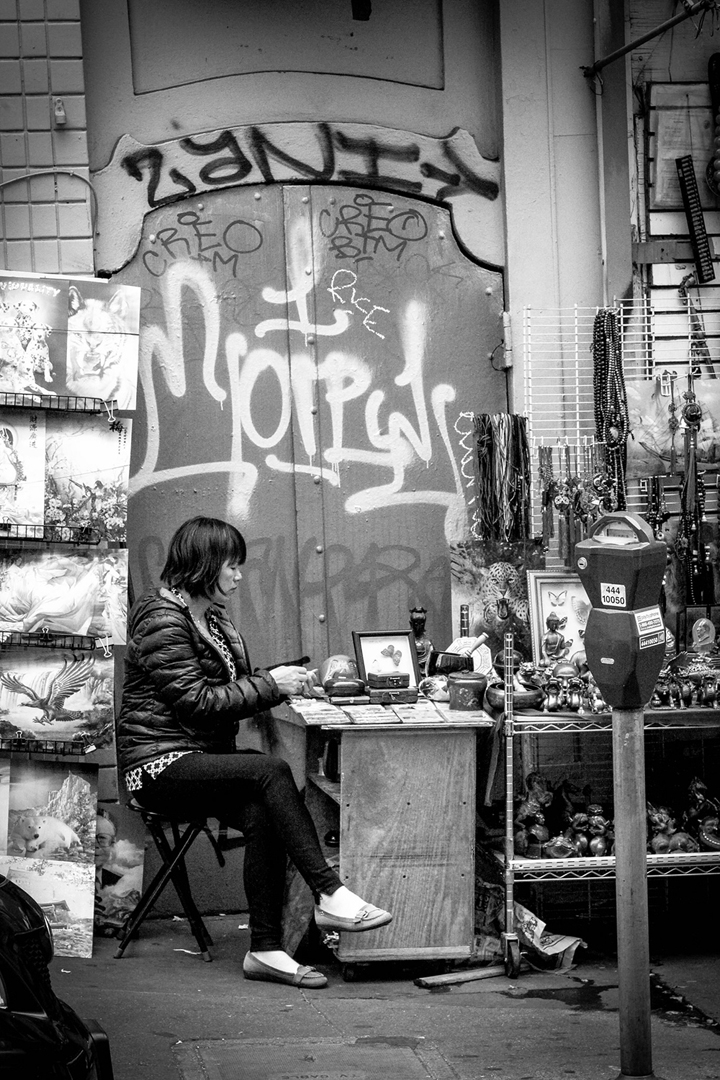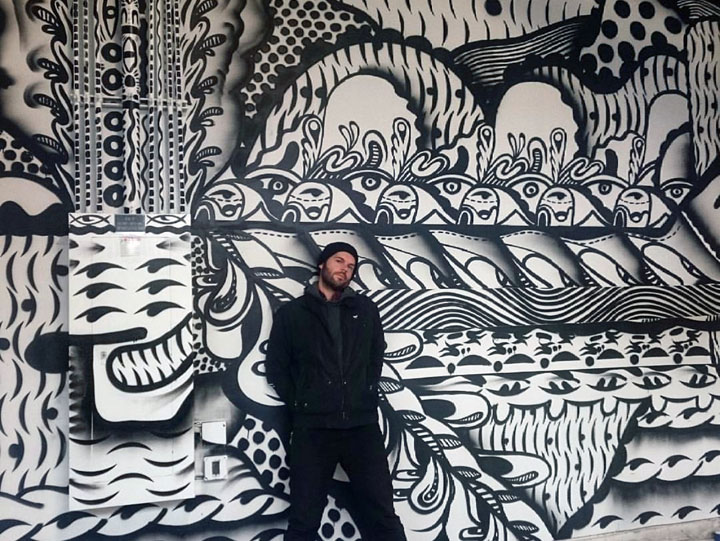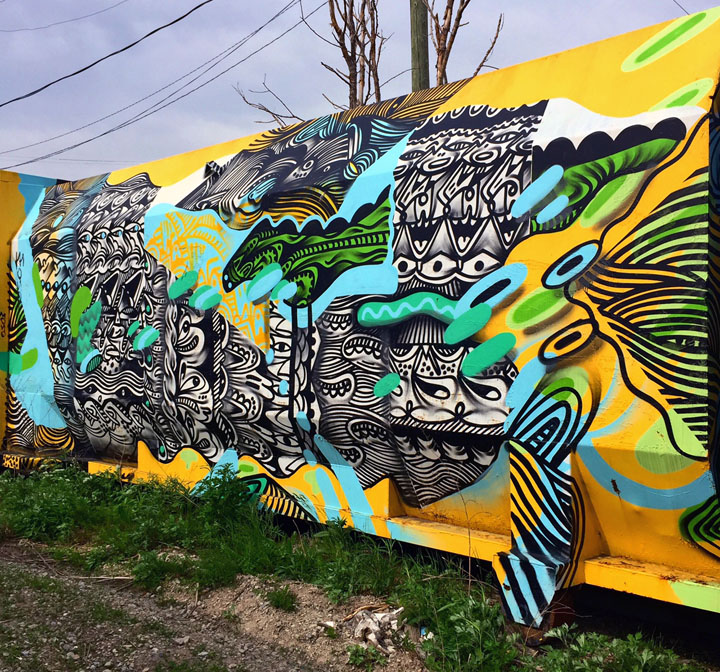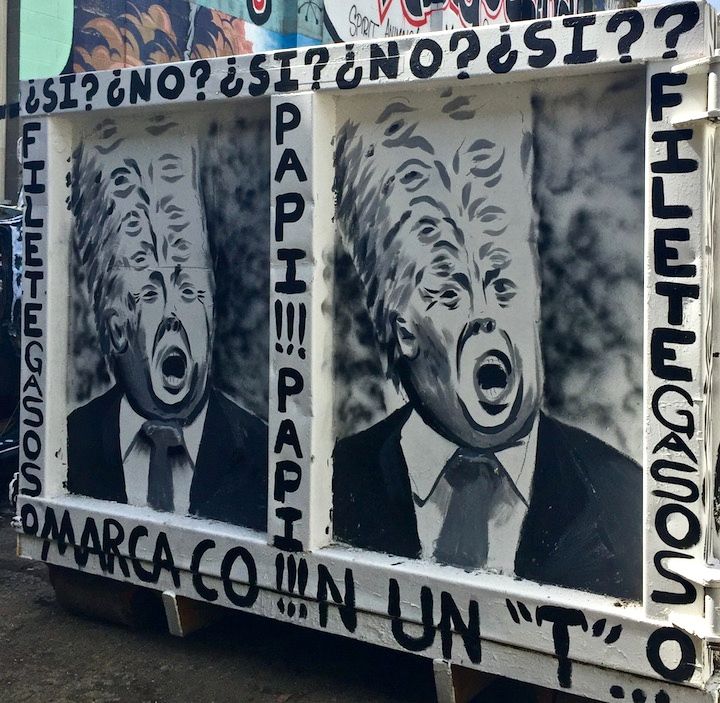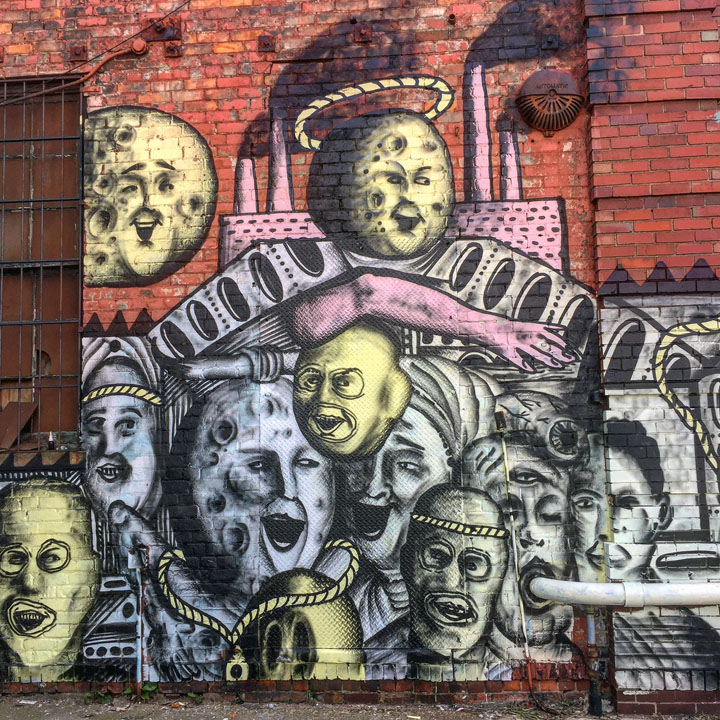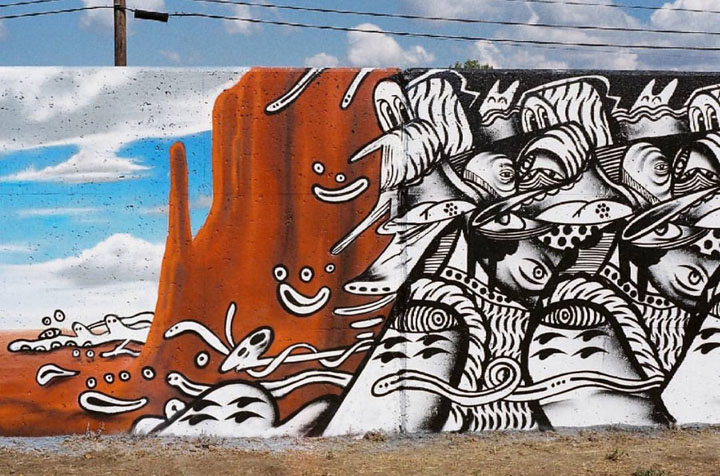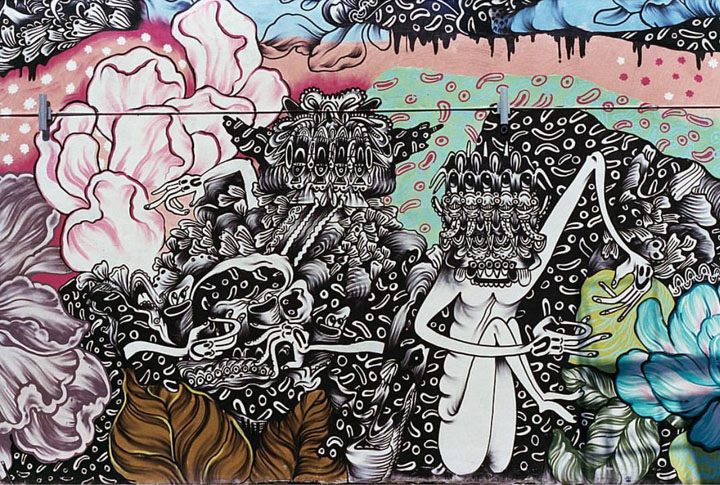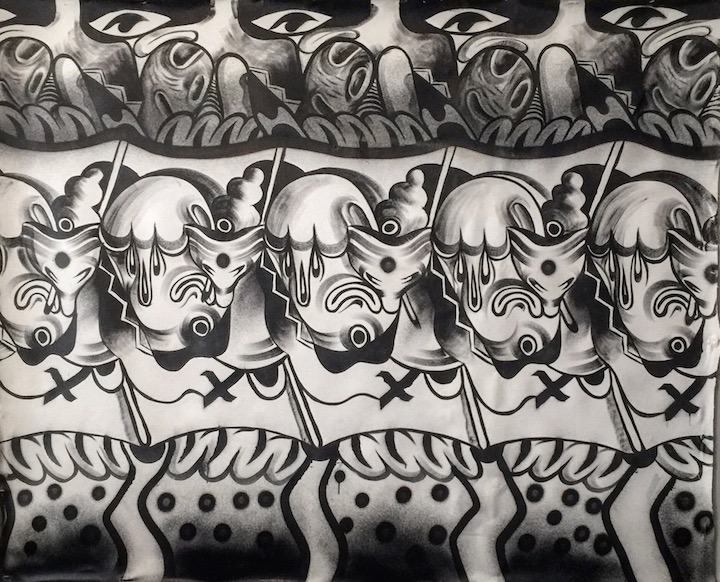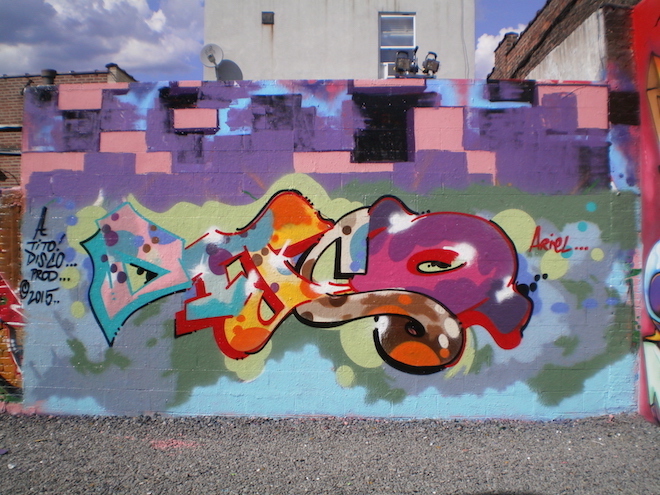
Growing up in the Bronx in the 70’s Osvaldo Cruz — under different aliases — began early on tagging and piecing wherever and whenever he could. His subway train art is featured, in fact, in Martha Cooper‘s and Henry Chalfant‘s landmark book, Subway Art. These days, with occasional stints painting legal walls over at Tuff City in the Bronx, Cruz focuses primarily on fashioning abstract — graffiti-inspired — images on canvases and is represented by Fountain House Gallery. An interview with the artist follows:
When and where did you first get up?
It was around 1978. I was eight years old. I lived near Yankee Stadium at the time, and I remember getting my initials, TC –Tito Cruz — up in the yard of P.S. 156, my local elementary school.
Did you have any preferred surfaces?
Anything was fine! I, especially, liked mail trucks.
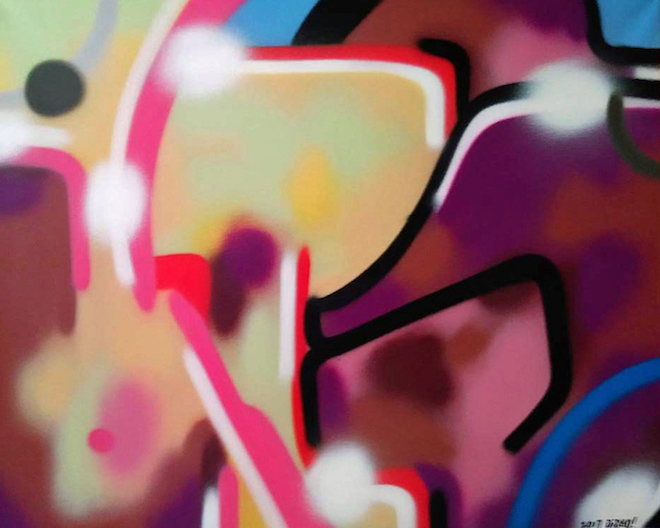
Who were some of the writers that inspired you back in the day?
I was inspired by the local writers: FDT 56, Hoy 56, Kid 56, Hazzy Haz from the D yard, Blade from the 5 layup, T-Kid from the 1 layup and Flame.
Have you any early memories that stand out?
Meeting Blade in the CC layup on Fordham Road in 1979 and soon after meeting Iz the Wiz up there. They both were already established writers by the time I had hit the subways.
But many memories that are not positive also stand out. One of my favorite graffiti names was GINSU, and that caused a log of turmoil in Chinatown, as all of the the school kids assumed that the tagger was Chinese. There were endless wars and fights back then over everything from copying one’s letters to being in the wrong place at the wrong time. There was too much disrespect. Enough to make some of us stop painting burners – knowing that someone was going to write inside or around our pieces.
Did you get up alone or did you paint together with any crews?
I didn’t paint with any crews, but I did have a sidekick, OHenry. He was my link to many different subway layups and yards. OHenry, though, has lost all interest in spray-painting and in graffiti. He doesn’t even want to talk about it. So when I see him these days, I don’t even bring it up.
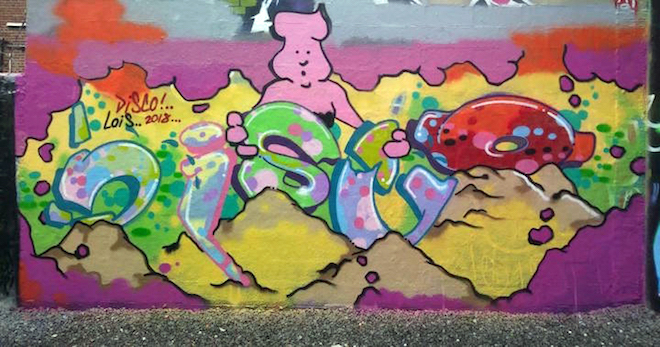
Had you ever been arrested back in the day for graffiti?
I was once falsely accused up at the 183rd Street Subway Station. I connected with a Legal Aid lawyer, and the case was dismissed.
What was the riskiest thing you’ve done?
Climbing into a yard up in the North Bronx off the 2 train. The fence was really high, and it was too easy to get tangled up in barbed wire. And I didn’t know who would be there once I made it in.
Do you have a formal art education?
I graduated from Art & Design High School in 1987.
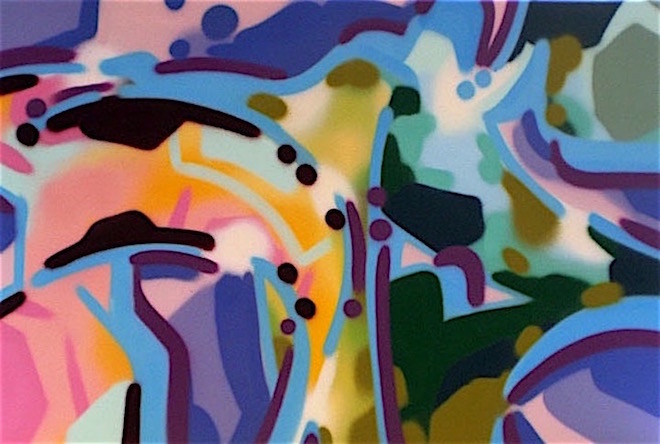
What percentage of your time is devoted to art?
About 75% — whenever I’m not attending to my personal needs, I paint.
Do you make money from your art?
Yes! Through commissions and selling canvases.
At what point did you begin working on canvases?
I actually started to experiment with graffiti art on canvas in the early 80’s, but it wasn’t until 2000 that I began to focus almost exclusively on painting on canvases.
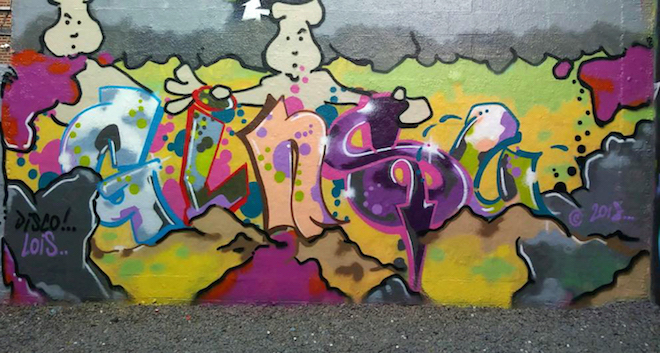
Which mode do you prefer?
I like them both, and I’ve been commissioned to do both.
How do you feel about the engagement of the corporate world with graffiti writers and street artists?
I have no problem with it. I’m happy for the artists.
Have you shown your work in galleries?
Yes. I’ve shown my work at Fountain House Gallery and at Pace University via Community Access.
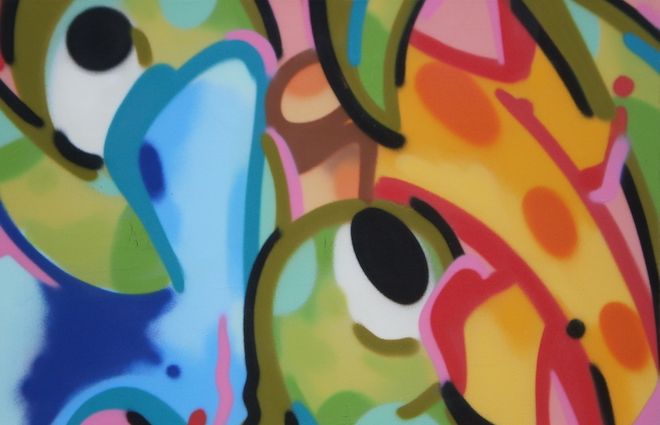
Do you work with a sketch in hand or do you let it flow?
No. I don’t work from sketches.
What inspires you these days?
My imagination!
Are you generally satisfied with your finished work?
Yes!
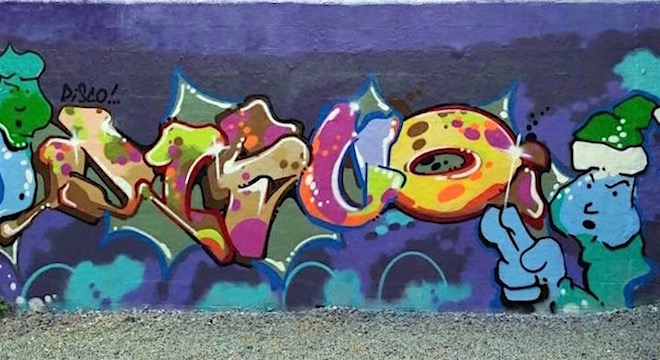
Are there any particular cultures that influence you at present?
I don’t feel influenced by cultures other than my own, but I like what the European writers are doing. I especially like the Swedish graffiti crew WUFC.
How has your work evolved through the years?
It’s more complex — more sophisticated, and I use more colors.
What’s ahead?
I just want to keep on painting.
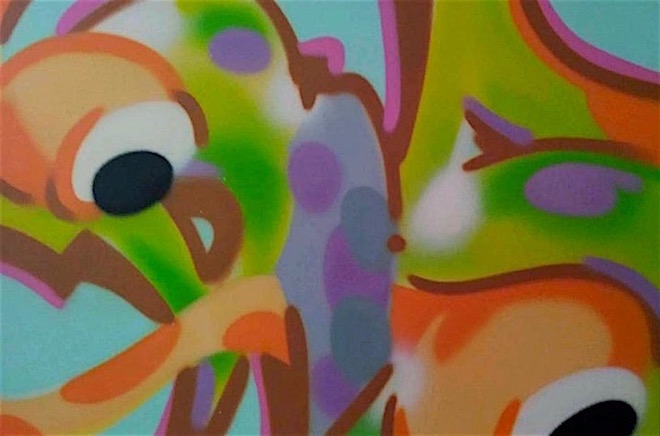
Good luck!
All photos courtesy of the artist; interview by Lois Stavsky
Note: Hailed in a range of media from WideWalls to the Huffington Post to the New York Times, our Street Art NYC App is now available for Android devices here.
{ 0 comments }
